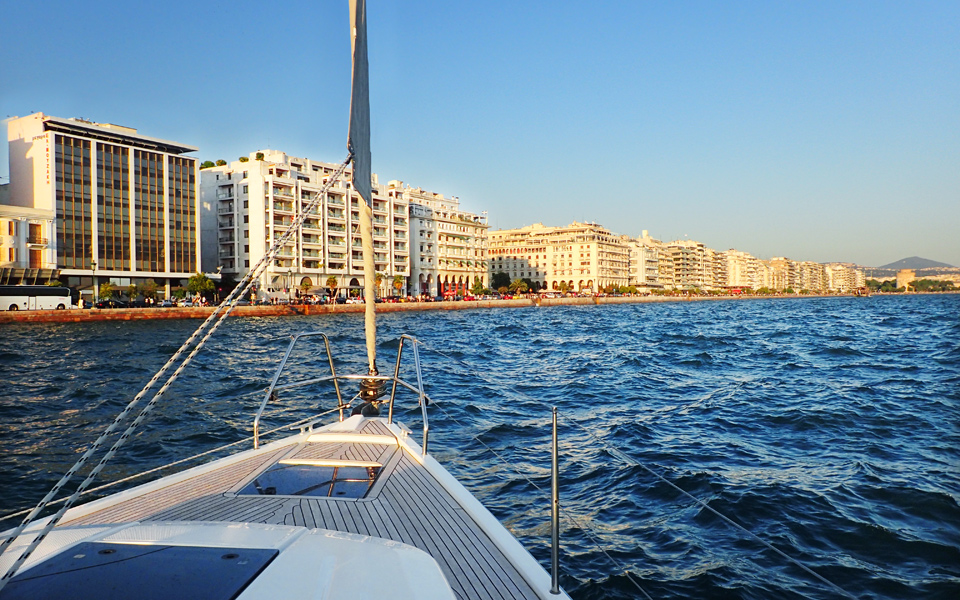Greece is water. We’re on an unusual tour of the history of Thessaloniki as seen from the bay, using the sea itself to gain a fresh perspective as the breeze fills the sails. Looking on our port city from out here, whipping around the harbor in a sailboat, we are witnesses to history. It’s not a chronology, but a pastiche of moments – dramatic, poignant, triumphant – that over the millennia have shaped the city’s collective psyche.
Safe harbor
We board the Aeolos at the Karabournaki yacht club, located at the end of Thessaloniki’s sleepiest stretch of waterfront in a neighborhood of the same name. This inner section of the Thermaic (or Thermaikos) Gulf is protected by two points: the mikro (small) and megalo (large) Karabournou, which means “black point”.
Casual antiquity
Life has flourished for thousands of years around the bay. Leaving the marina, we sail parallel to the coast, then take a sharp right after a buoy marker in the sea. This is to avoid hitting the Byzantine wall that runs just under the water’s surface. Part of it juts out of the water and serves as the foundation of a small lighthouse. We’re near a large green area called Kodra, once a military base and now an outdoor cultural venue. The soil is rich in shards of pottery from much earlier times. Michalis Tiverios, an archaeology professor at the Aristotle University of Thessaloniki, has identified these as artifacts of ancient Thermi, a city that was inhabited through the Geometric, Archaic and Classical periods (8th–5th centuries BC). It is from ancient Thermi that the Thermaic takes its name.
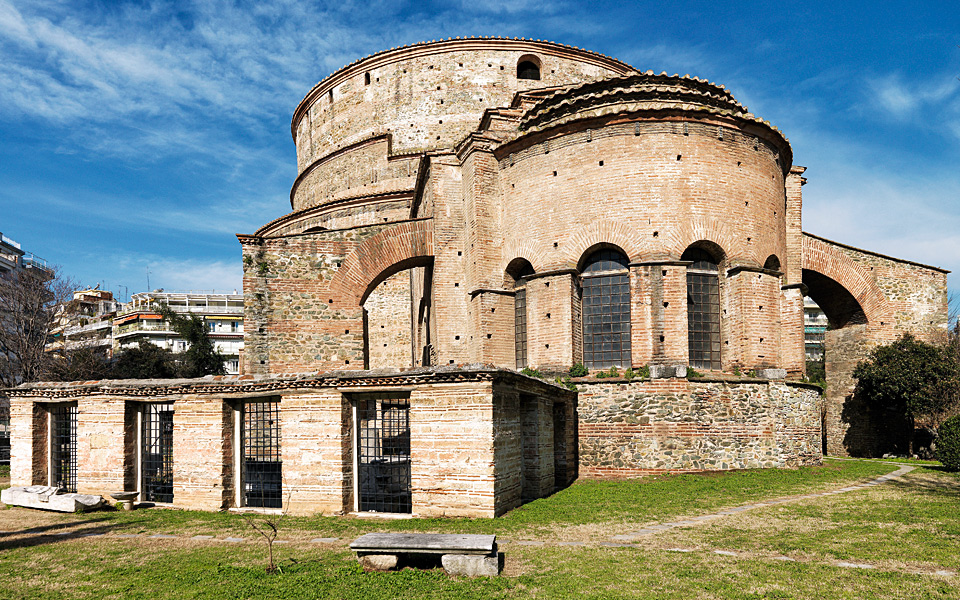
© Shutterstock
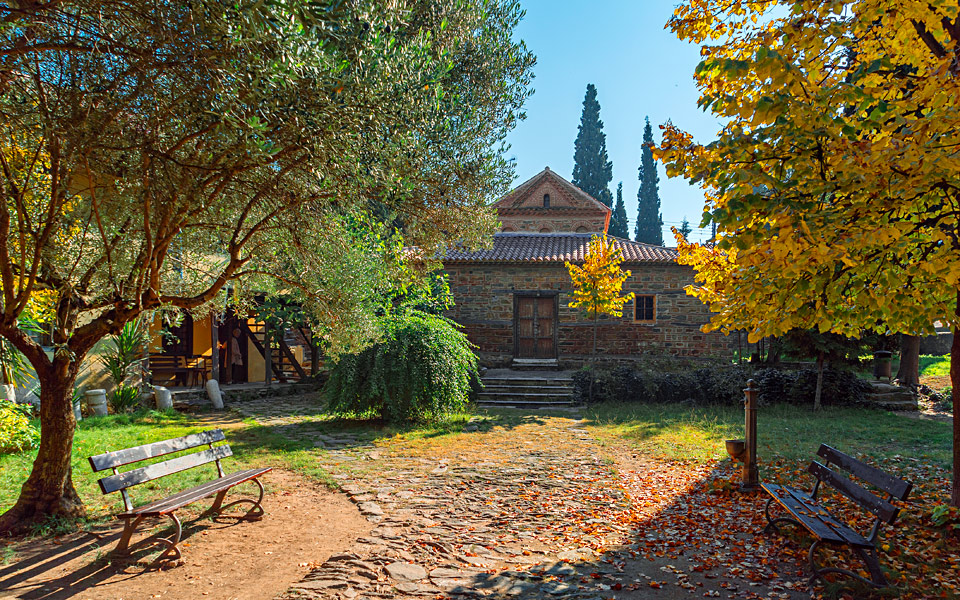
© Shutterstock
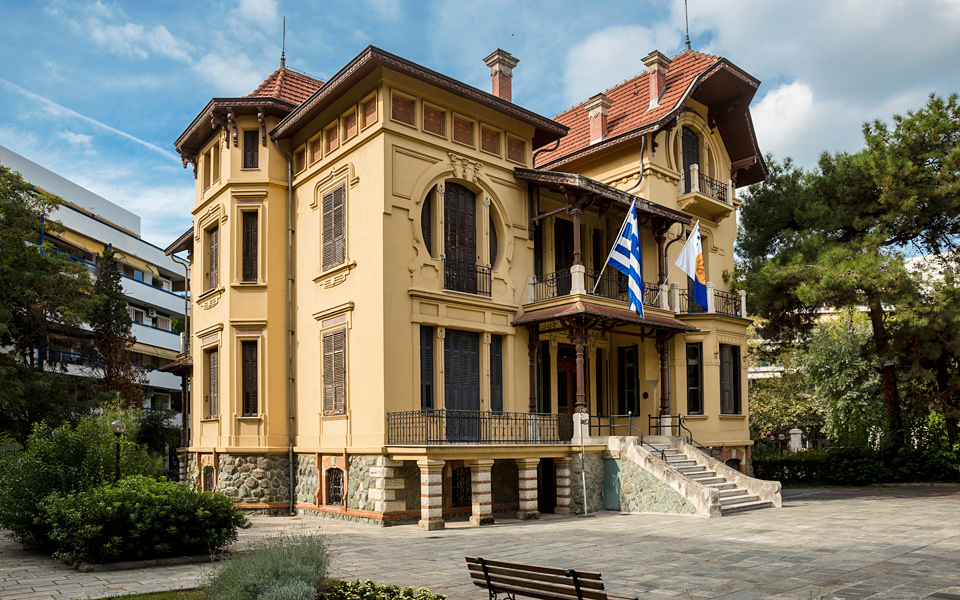
“‘About 9 o’clock came to anchor before Salonica. A walled town on a hill side … Minarets & cypress trees the most conspicuous objects.’ Now only one of these minarets remains..”
Call me Ishmael
“At day break roused by the Captain to come on deck. Did so. Saw Mount Olympus, covered with snow at the summit, & looking most majestic in the dawn. Ossa & Pelion to the south. Olympus 10,000 feet high, according to the Captain’s chart. O & P about 4 or 5,000. Long ranges of hills along the Thessalian shore. Mount Athos (rather conical) on the opposite shore.” This was the Thermaic Gulf as seen by American writer Herman Melville in the early hours of December 6, 1856. The mountains remain where Melville left them, but otherwise the city is much changed. “About 9 o’clock came to anchor before Salonica. A walled town on a hill side … Minarets & cypress trees the most conspicuous objects.” Now only one of these minarets remains. It stands over the Rotunda, constructed in 306 AD as part of the Galerian complex. Converted soon thereafter into a Christian church, in 1590 it became the Hortaç Efendi mosque, as it was at the time of Melville’s visit. “Several of the mosques formerly Greek churches … One of them circular & of immense strength. The ceiling mosaic. Glass. Pieces continually falling upon the floor. Brought away several.”
Belle Epoque
The sea walls Melville saw were taken down soon after; by the 1870s, much of the city was exposed to the sea breeze. The city spread further east and this new district soon became the fashionable area of town, the Exoches. The rest of the city’s residential areas were largely divided by the three faiths, but in the mansions of the Exoches, the city’s wealthiest Jews, Christians, and Muslims lived side by side, separated only by their large gardens. Some buildings stand out: industrialist Dino Fernandez-Diaz’s house Casa Bianca (now the Municipal Art Gallery), the two mansions of brothers Mehmet and Ahmet Kapandji (one is now the Cultural Foundation of the National Bank of Greece) and the Villa Modiano (now the Folk Art and Ethnological Museum of Macedonia and Thrace).
Royal palace
The focal point on the western coast of the Thermaic is a high green bluff jutting out into the bay. The Greek royal family had their summer residence built here in the late 1950s, with the quaint harbors of Krini to the left and the city, shimmering and majestic, across the bay in the distance. Apparently, it was just too far away though, for the royal family stayed here just one night (much preferring the cosmopolitan atmosphere of the Méditerranée Hotel). It has had various uses since. After the dictatorship, it was the first presidential mansion. Later it served as the residence of the minister for Macedonia–Thrace, and, most recently and more glamorously, was the venue for the wedding reception of the son of Ivan Savvidis, owner of beloved hometown football team PAOK. You could see the fireworks from all over town.
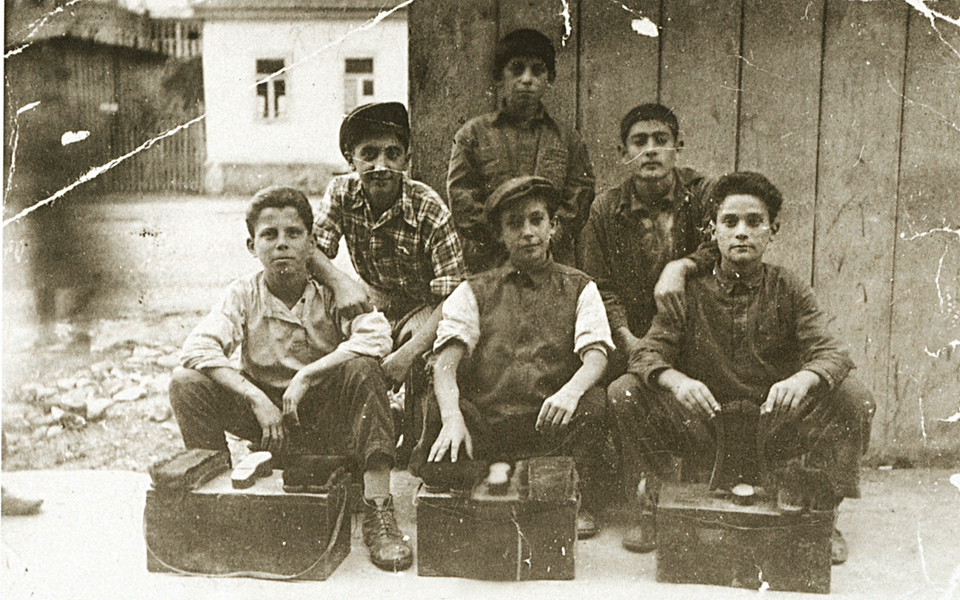
© Thessaloniki Walking Tours
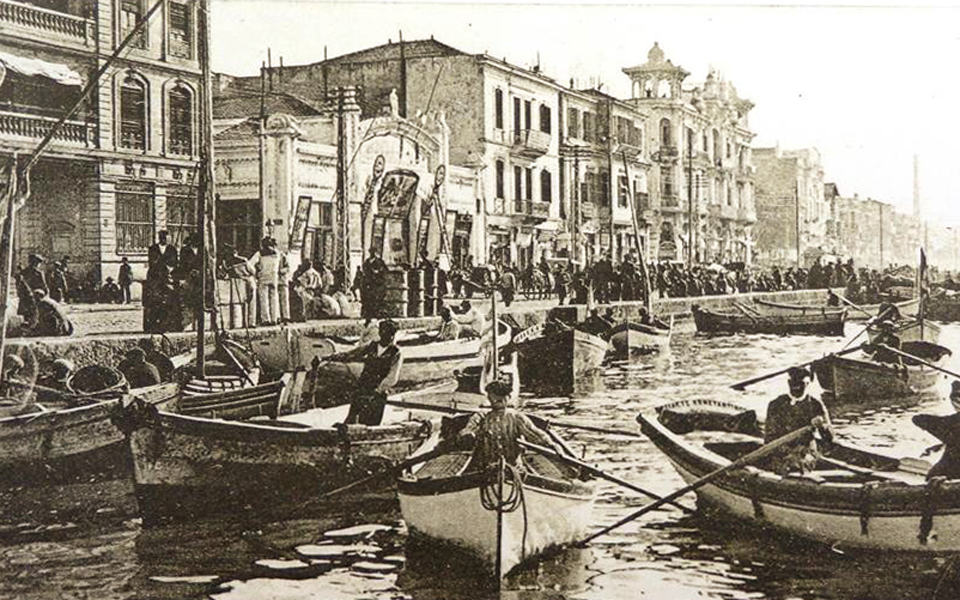
© Thessaloniki Walking Tours
Sorrows and strength
This most eastern of western cities has been shaped by the groups of people coming to its shores, be they as conquerors or immigrants. The most recent wave, in 1922, brought the Greek refugees of Asia Minor. Thessaloniki took by far the largest share, over a quarter of a million people. This has had a profound impact on the city’s culture, leaving a beautiful legacy in many respects. The Asia Minor Greeks were known for their strong work ethic. They gave the city’s cuisine, its rich and deep eastern elements. We also have them to thank for the sweet melancholy of the deeply urban and distinctly eastern strain of folk music known as rebetika. They settled in, or rather created, the district of Aretsou, bringing the name with them from Turkey (the original Aretsou is now called Darica). From a refugee camp in the 1920s, it’s now Thessaloniki’s seaside resort, full of chic bars and restaurants.
But the past has left its traces. Apolimanitiria, the name of the first bus stop, means quarantine. It was here that the refugees were screened for typhoid and tuberculosis. We were all moved to silence by what the women of Asia Minor remembered most from these years of hardship: it was a time of such poverty, their famously thick, lustrous hair was a point of pride and their sole luxury. In lives already filled with unimaginable loss, having their beautiful hair shaved off in the quarantine station here was a wound that never fully healed.
Survival of the … most ruthless?
Vlatadon Monastery (still known to the older locals by its Turkish name, Tsaous Monastery) is nearly the city’s highest point. When Sultan Murad II conquered Thessaloniki in 1430, it wasn’t the Greeks they were taking it from. Unable to fend off their Ottoman aggressors, the Byzantines had already sold the city to the Venetians seven years earlier. That makes the following – if indeed it happened – perhaps slightly less treasonous. There has long been conjecture that the Vlatadon monks may have been instrumental in the city’s fall. The Hortiatis aqueduct – the city’s water source – runs through here, and the city capitulated quickly when it was somehow closed off. The fact remains that, throughout the centuries of Ottoman rule, both the monastery and the church of Aghiou Nikolaou Orphanou that belongs to it were left to carry on in peace.
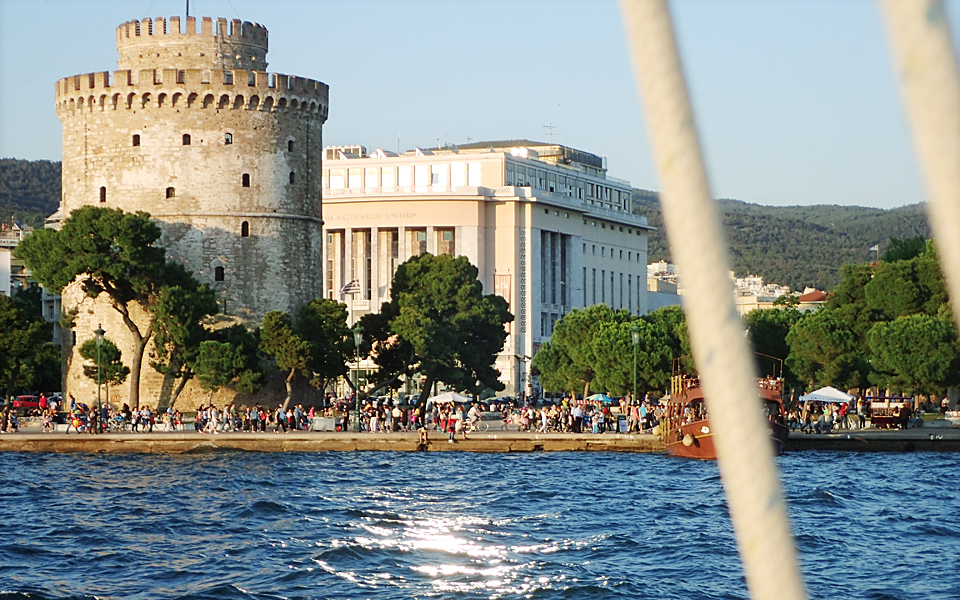
© Thessaloniki Walking Tours
“This most eastern of western cities has been shaped by the groups of people coming to its shores, be they as conquerors or immigrants.”
A pole as proud as its flag
The White Tower is Thessaloniki’s official picture postcard landmark. On top, there is of course a big, glorious Greek flag billowing in the gulf’s breeze. But what is it flying from? Take a look – it’s no ordinary flagpole. In fact, it’s not a flagpole at all. A week before the city was liberated from Ottoman rule (October 26, 1912), explosions shook the sea with such violence that the Ottoman Navy thought it was an earthquake. Actually, the noise was caused by torpedoes fired from boat No 11, commanded by Nikolaos Votsis, which sunk the Ottoman ship Feth-i Bülend. The Greek flag now flies from its mast. You can see a bust of Admiral Votsis right next to the White Tower and this trophy of war that rises from it.
(War) crime and punishment
From out here in the bay, looking just to the right of the city, we can see Hortiatis mountain, the scene, on September 2, 1944, of a gruesome massacre, mainly of women and children, in a village of the same name. This was at the command of Fritz Schubert, already infamous from his brutalities in Crete. Fleeing after the liberation, Schubert attempted to return to Greece, unaccountably trying to pass himself off as Konstantinos Konstantinidis. He was recognized and taken to Athens to stand trial. His conviction was a matter of such keen public interest that posters detailing it were issued by the police. Rather than keeping him in Athens, the authorities sent him back here, to be executed at Yedi Kule (or Eptapyrgio) fortress, nearly within sight of the scene of his crimes, in 1947.
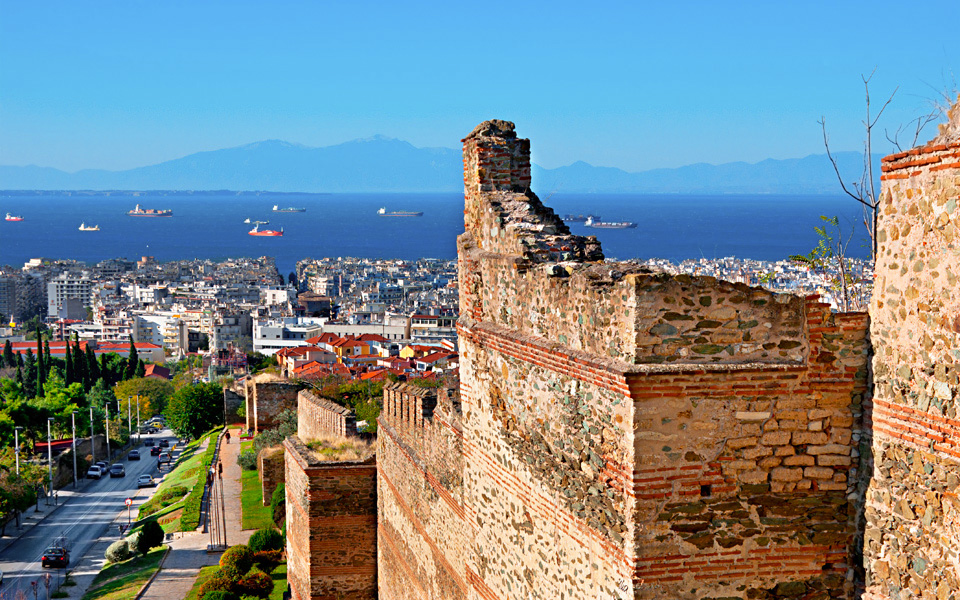
© Shutterstock
The poet of the sea
The Thermaic Gulf and the city itself are purified by a savagely icy wind in winter. The Vardaris, known from Byzantine times, is legendary – the name is evocative of a mood so distinctively Thessaloniki that it appears frequently in song and verse. Nikos Kavvadias, born to Cephalonian parents in Russia in 1910, was, being both a sailor and poet, the consummate embodiment of two of the most romantic aspects of Greek identity. In the course of his travels, Kavvadias was in these same waters. His poem “Thessaloniki” conjures the depths of nostalgia and longing that the city shares with the sea itself. The poem, which opens with the Vardaris, has become a popular song.
It was that night that the Vardaris was blowing
The prow of the ship was defeating the waves, fathom by fathom
The first one sent you to estimate the water’s thickness
But all you keep thinking about is Smaro and Kalamaria.
Hébrard’s divine vision
After the great fire of 1917, French architect Ernest Hébrard was chosen to redesign the city on a grand European model of boulevards and plazas. The only one he realized is Aristotle Square, the city’s main plaza. On a clear day, if you stand in the dead center of the square and look up, you will find yourself perfectly aligned with the peak of Mt Olympus. It is as much a spiritual orientation as a geographic one, the mountain catching the imaginations of Melville and probably of Murad, of us, surely of Cassander, and of the Asia Minor refugees – of everyone who has shaped the city, visits it or calls it home. As we return to the marina, sailing past the shank of downtown from Aristotle Square to the White Tower, the cafes are filling up and all eyes are on Olympus in the light of the setting sun.

